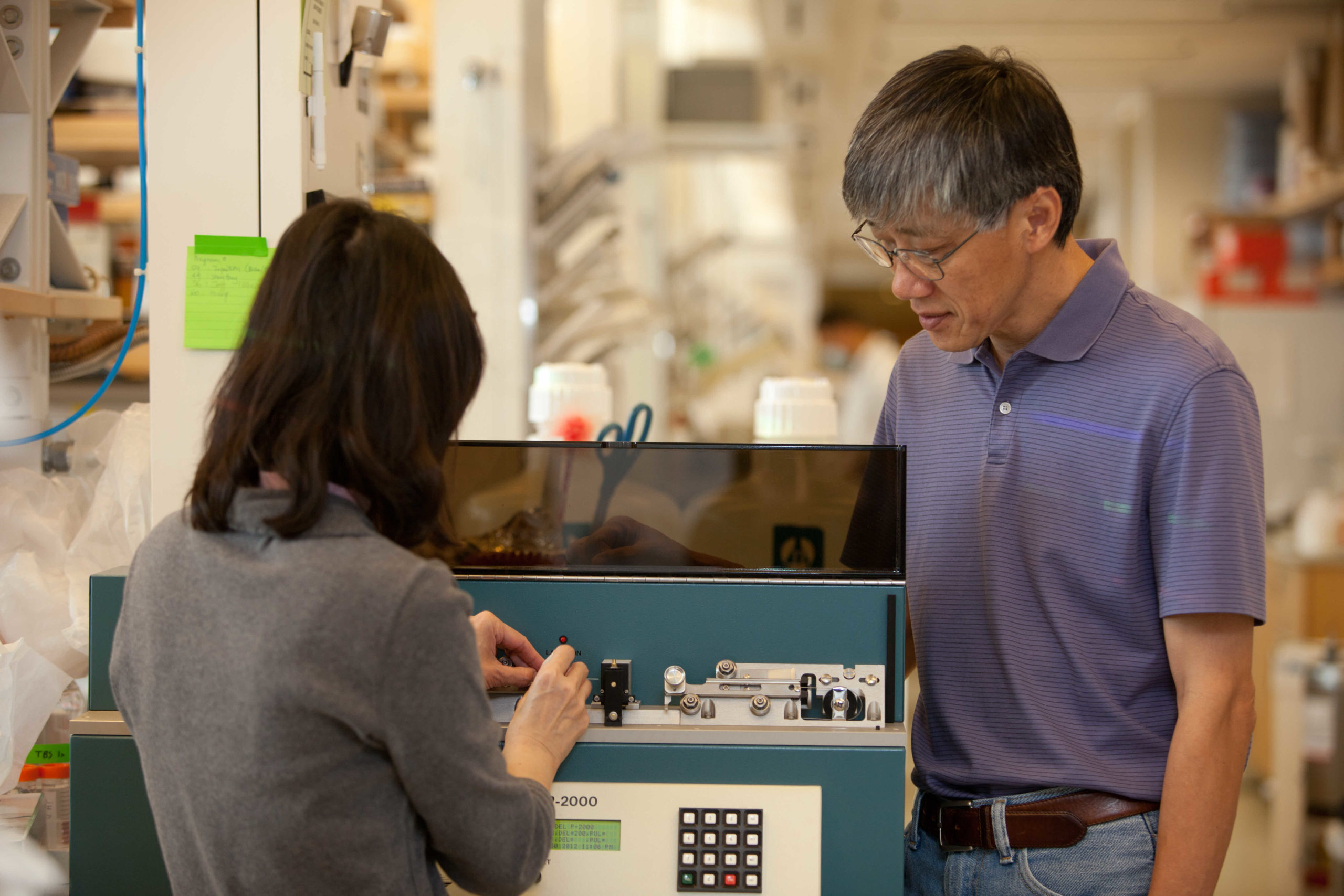Investigating the Mysteries of Alzheimer’s Disease

Understanding the causes of Alzheimer’s disease (AD) and thinking about effective treatment strategies are just some of the things that interest Professor Edward Koo. Prof Koo holds appointments in the Departments of Medicine and Physiology at the NUS Yong Loo Lin School of Medicine and in the Department of Neurosciences at the University of California, San Diego, School of Medicine.
Although there are several theories about how AD arises, genetic studies support the “amyloid hypothesis,” which features the accumulation of amyloid β-protein (Aβ) as the seminal event (see Fact Box). In spite of these advances in our understanding, Prof Koo notes that many critical questions remain. For example, aside from rare genetic forms of AD, it is unclear what triggers AD. Age is the biggest risk factor, but the role age plays is unknown. Second, it remains unclear whether the non-genetic (sporadic) form shares the same disease mechanisms as the genetic forms of AD. Third, the amount of Aβ in the brain does not correlate with disease severity and early attempts to lower Aβ levels did not improve cognition or slow disease progression.
Prof Koo is also involved in developing new AD therapies. There are two types of therapies: 1) symptomatic therapies that alleviate disease symptoms; and 2) disease-modifying therapies that disrupt the disease process. Only symptomatic therapies have been approved thus far. Although much industry effort has gone into developing disease-modifying therapies, results have been disappointing. One widely accepted view is that these treatments were started too late in the disease course, thus late-phase clinical trials are now being conducted in early-stage patients as well as asymptomatic individuals who carry inherited AD mutant genes. Researchers are actively pursuing immunotherapies (antibodies that remove Aβ from the brain) and “secretase” inhibitors that inhibit Aβ production. They are also testing multiple therapies that address other disease targets, including those such as brain neurofibrillary targets, another hallmark of AD.
The dearth of new effective therapies highlights the importance of continued research in the development of AD and related neurodegenerative diseases. Started in March 2015, Prof Koo, Prof Carlos Ibanez, and other NUS faculty aim to fulfil this need by leading a strategic effort funded by NUS and NUHS to study neurodegenerative diseases. The multidisciplinary team consists of clinician researcher A/Prof Dr Christopher Chen; neurophysiologist Dr Sajikumar S; live-cell imaging expert Dr Lee Chi Wai; and neuroscientist Dr Ling Shuo-Chien, who specializes in animal models of neurodegenerative diseases. The team is currently recruiting additional expertise in translational research from the lab to the clinic. The goal for this effort is to create a truly collaborative umbrella, bringing together existing strengths to build an internationally competitive team of neuroscientists that will study AD from bench to bedside.
Facts
What Causes Alzheimer’s Disease?
- Theory 1: Accumulation of Aβ peptide in brain causes AD.
- Theory 2: Aβ aggregates into clusters (oligomers), which are poisonous to nerve cells. Oligomers form fibrils, which catalyse more oligomer formation, causing AD.
- Theory 3: Accumulation of Aβ oligomers and tau protein tangles near synapses causes loss of synapses and/or reduced synaptic plasticity (feature of brain that allows learning and creation of new memories).

References
- Koo EH. Preclinical and clinical understanding: What are the major gaps in our understanding and capabilities? Where aren’t we looking and where should we be looking? Manuscript in preparation.
- Cummings JL, Morstorf T, Zhong K. Alzheimer’s disease drug-development pipeline: few candidates, frequent failures. Alzheimers Res Ther. 2014;6:37.
- Ministry of Health, Singapore. MOH Clinical Practice Guidelines: Dementia. 1/2013. Available at: http://www.moh.gov.sg/cpg.
- Chiang K, Koo EH. Emerging therapeutics for Alzheimer’s disease. Annu Rev Pharmacol Toxicol. 2014;54:381-405.
- Cohen SIA, Arosio P, Presto J, Kurudenkandy FR, Biverstal H, Dolfe L, Dunning C, et al. A molecular chaperone breaks the catalytic cycle that generates toxic Aβ oligomers. Nat Struct Mol Biol. 2015 Feb 16. [Epub ahead of print]
